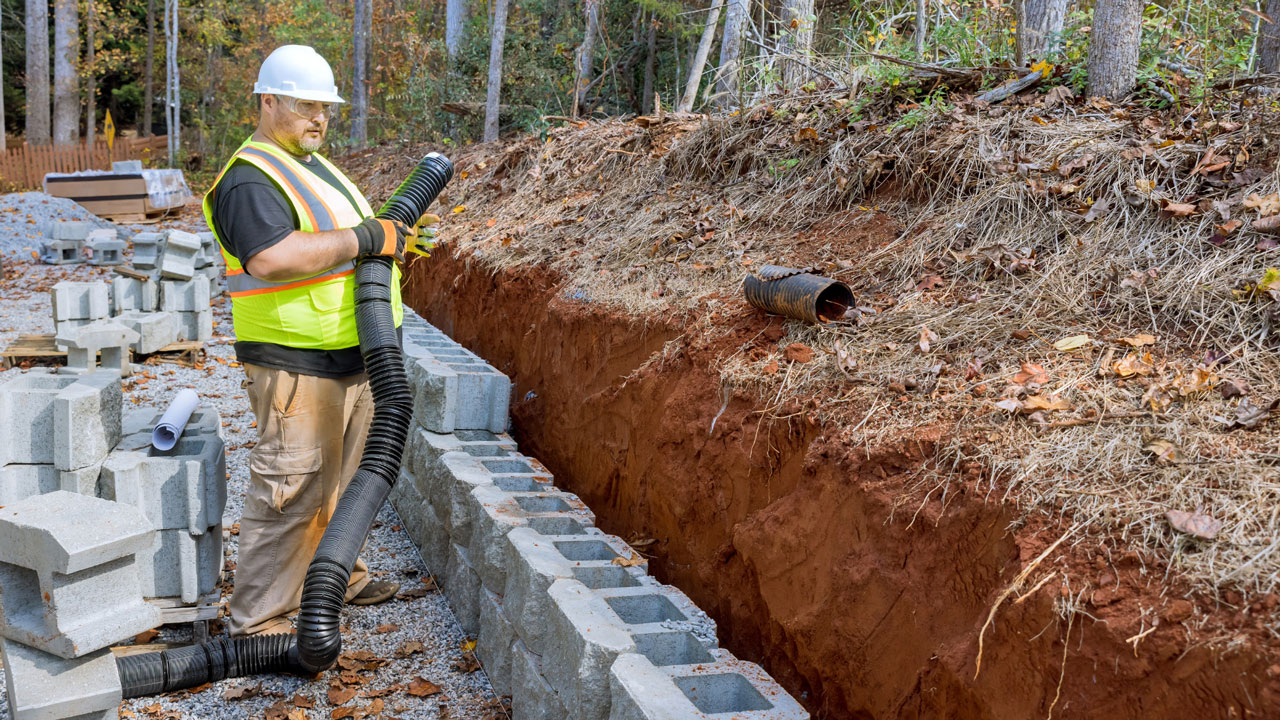
Retaining wallsRetaining walls are structures designed to hold back soil and prevent erosion in landscapes with var... are a vital component of landscaping and hardscape designHardscape design refers to the planning and creation of non-living elements in a landscape, such as ..., offering both aesthetic appeal and functional benefits by preventing soil erosion and managing sloped areas. However, proper drainage is crucial to the longevity and effectiveness of any retaining wall design.
Without adequate drainage, water pressure can build up behind the wall, leading to potential damage to your landscaping projects in your outdoor space. This comprehensive guide explores the best practices for retaining wall drainageRetaining wall drainage is a crucial process in the construction of retaining walls, designed to pre... solutions, ensuring your structure stands the test of time.
Retaining walls, often made of concreteConcrete is a composite material made from a mixture of cement, sand, gravel, and water. It is one o... blocks, are designed to hold back soil and create levelA level is a tool used to determine whether a surface is horizontal (level) or vertical (plumb). It ... surfaces in sloped areas, making them essential elements in landscaping, construction, and urban development projects. The necessity of retaining wall drainage arises from several key factors:
The primary purpose of retaining wall drainage is to ensure the long-term stability and integrity of the wall. By managing water flow, the drainage system helps prevent damage caused by water infiltration and soil erosion. This not only maintains the wall's structural integrity but also extends its service life, reducing the need for costly repairs or replacement.
Without proper drainage, water flowing over or around a retaining wall can lead to significant soil erosion, particularly in areas with loose or sandy soil. This erosion can undermine the foundation of the wall, leading to instability and eventual failure. A well-designed drainage system helps control runoff and reduces the impact of erosion on the wall and surrounding landscape.
The failure of a retaining wall due to inadequate drainage poses a significant safety risk, not just to the immediate structure but also to adjacent properties and individuals. The sudden collapse of an outdoor space wall can cause injury, property damage, and, in severe cases, loss of life. Ensuring proper drainage is a critical measure in safeguarding public and private safety.
In many jurisdictions, retaining walls must comply with specific building codes and environmental regulations, which often include requirements for adequate drainage. These regulations are designed to protect water quality, prevent erosion, and manage stormwater, making compliance not just a legal obligation but also an environmental responsibility.
Retaining walls are not just aesthetic features in landscaping but crucial structures that manage soil erosion and support land contours. The longevity and effectiveness of these walls largely depend on the proper implementation of drainage solutions.
Proper drainage is essential for retaining walls to prevent water accumulation, which can lead to hydrostatic pressure buildup. This pressure can compromise the integrity of the wall, causing bulging, cracking, or even collapse. A well-designed drainage system by expert hardscape contractors allows water to flow away from the wall, ensuring stability and durability.
Water accumulation behind the retaining wall can lead to hydrostatic pressure, potentially causing failure. Here's an expanded look into the various drainage solutions, highlighting the importance of each component and how they work together to ensure the durability of your retaining wall.
Hydrostatic pressure builds up when water collects behind the retaining wall, exerting force on it. This pressure can push the wall forward, cause cracks, or even lead to its collapse. Effective drainage systems mitigate this risk by redirecting water away from the wall, relieving pressure and preserving the structure's integrity.
For retaining walls in areas with high water tables or severe drainage issues, additional measures might be required:
Don't let water damage compromise the integrity of your retaining wall. Contact West Hills Masonry today to consult with our expert hardscape contractors. We'll help you implement the perfect drainage solution to protect your investment and enhance your outdoor living spacesOutdoor living spaces are areas designed for comfort and entertainment in the open air, often functi....
With West Hills Masonry, you can rest assured that your retaining wall will be equipped with an efficient drainage system designed to withstand the elements. Contact us today to schedule a consultation with our expert team. Let's work together to protect and enhance your outdoor space with a durable, well-drained retaining wall.
 Carlos Gonzales
Carlos GonzalesLocations We Serve
Schedule A Consultation